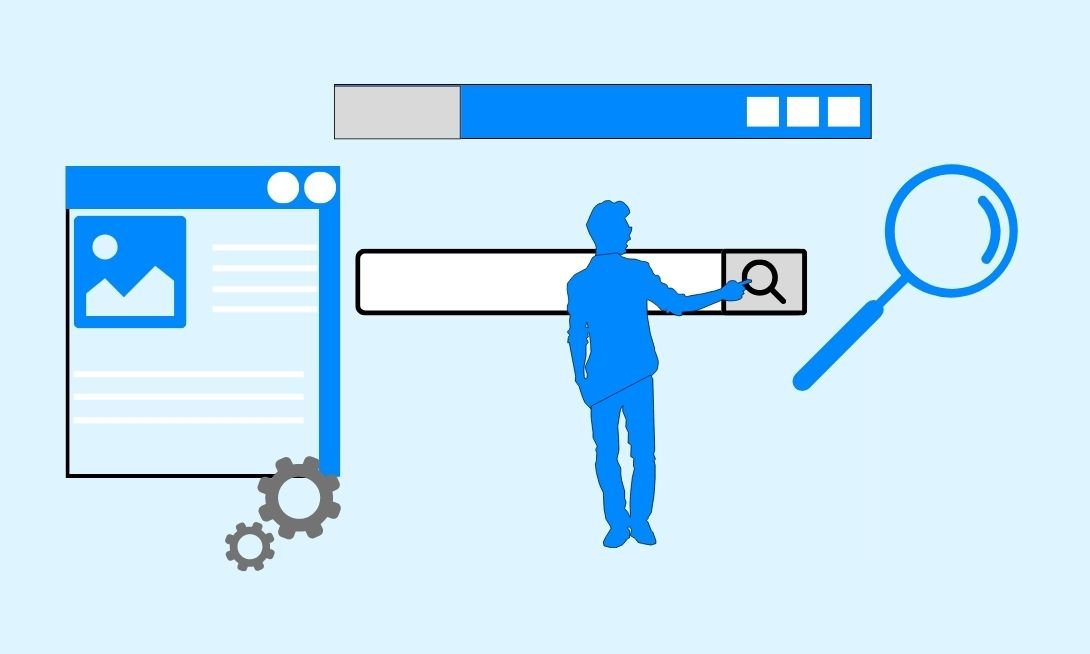Search engine marketing (SEM) is a digital marketing strategy that involves increasing the visibility and ranking of a website or online content on search engines like Google, Bing, and Yandex. Furthermore, SEM can help attract qualified traffic to your website, increase brand awareness, and drive sales. Furthermore, if you want to quickly increase traffic, leads, or conversions, or start ranking higher for your online content, SEM may be the best option for you. In this article, we will explore everything you need to know about SEM, including the benefits of search engine marketing.
Table of Contents
This article will provide an overview of SEM, including its appearance on search engine results pages (SERPs) when implemented effectively, the benefits of search engine marketing, different types and terminology, and important tools to use for SEM.
What is SEM?
SEM is one of the digital marketing strategies or processes that is important for getting traffic from search engines either organically (SEO) or paid (PSA).
Here, SEO helps to get organic traffic through keywords or other optimizations whereas, Paid Search Advertising (PSA) is a process of paying for ads or campaigning to appear on the Search Engine Results Page (SERPs).
Search engine marketing includes several tools, multiple techniques, and innovative strategies that help optimize the visibility of your online content (Web pages, images, videos, etc.) on various search results.
Ultimately, we can say that SEM is the marketing technique of placing ads on SERPs to increase visibility and get more traffic in a quick time as compared to traditional SEO.
Related: The Importance of Online Marketing for Business Growth in 2023
How Does SEM (Paid Search ads) Look on SERPs?
Generally, you use two Ad types, “Search & Display Ads”.
Search ads are shown on the search engine results page. Google shows 3-4 search ads on the top and 3 such ads at the bottom of the first search result pages, whereas, display ads are shown inside a web page.
Here is a screenshot of the preview of Paid Search Ads on the search engine results page:
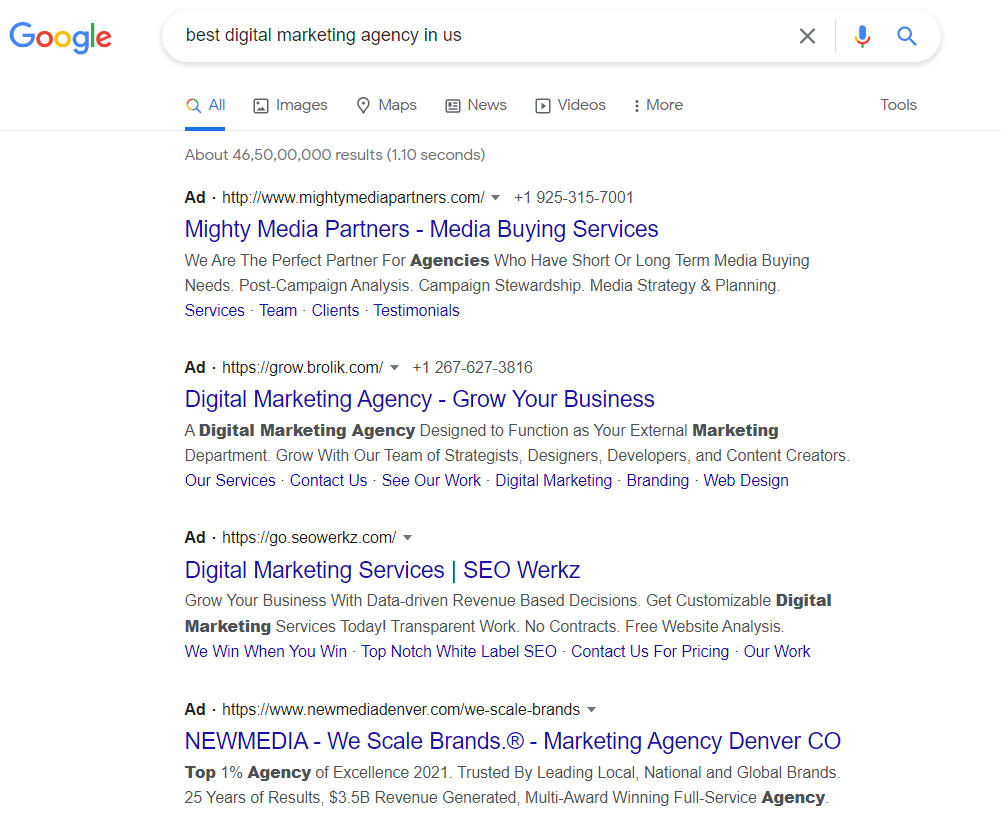
In the above screenshot, all the searches that are started with ‘Ad’ are paid search ads.
Here is a screenshot of the preview of Paid Display Ads on the search engine results page:
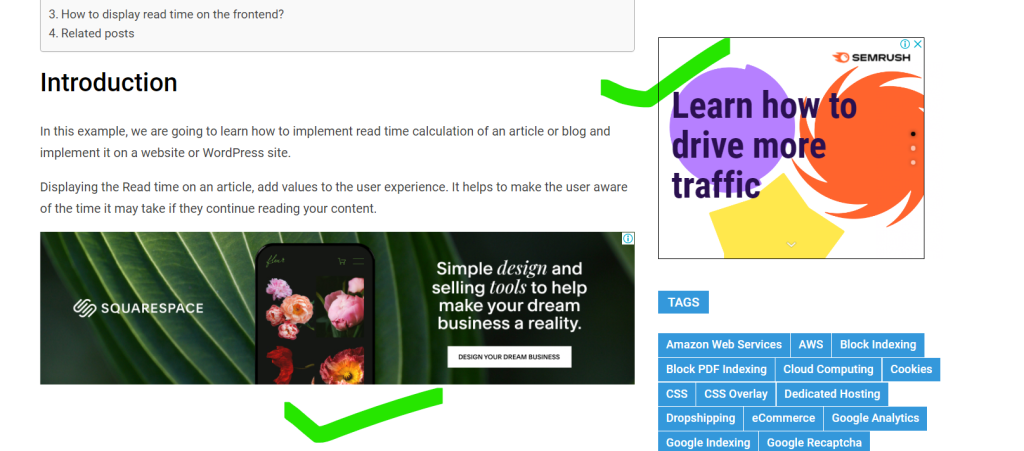
In the above screenshot, the two tick-ads are paid display ads that are shown inside a web page.
What are the Benefits of Search Engine Marketing?
Here are top 6 benefits of search engine marketing (SEM):
1. Increased visibility
SEM can help increase the visibility of a website or online content on search engine results pages, making it more likely that users will see and visit the site.
2. Targeted advertising
SEM allows marketers to target their ads to specific keywords, demographics, and geographic locations, making it more likely that the ad will be seen by users who are interested in the product or service being advertised.
3. Measurable results
SEM provides detailed analytics and metrics that allow marketers to track the performance of their campaigns and make data-driven decisions about their strategy.
4. Cost-effective
SEM allows marketers to set a budget for their campaigns and only pay when their ad is clicked, making it a cost-effective way to reach potential customers.
5. Quick results
SEM can deliver quick results, as ads can start appearing on search engine results pages as soon as they are set up and approved.
6. Increased brand awareness
SEM can help increase brand awareness by getting a business’s website or online content in front of a large number of users.
What are the Types of Search Engine Marketing?
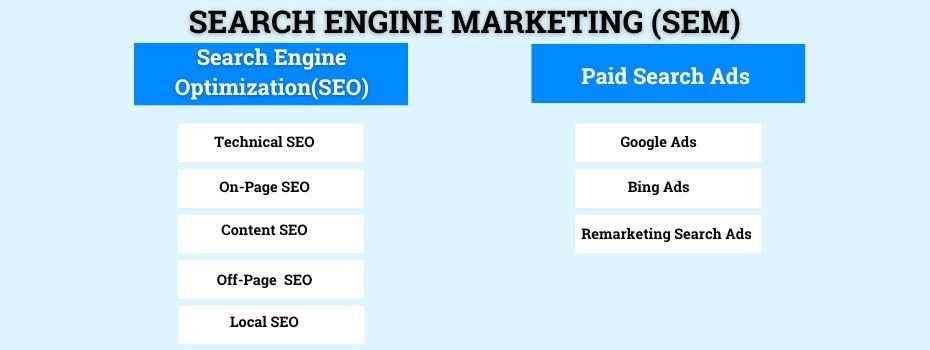
Search Engine Marketing (SEM) is divided into two types
1. Search Engine Optimization (SEO – Organic)
2. Paid Search Ads (PSA – Paid)
Search Engine Optimization (SEO – Organic)
SEO is the process of optimizing online content for achieving a higher ranking in search engines on certain keywords. The principles of search engine optimization also help to create high-quality content and satisfy users’ intent.
To understand better, SEO is further divided into 6 types:
1. Technical SEO
It is used to optimize your online content for the crawling & indexing process so that Google and other search engines can discover, read, and understand your content easily.
2. On-page SEO
It is used to optimize all the pages of your website so that you can give search engines accurate signals about your page.
3. Off-page SEO
It is used to promote your web pages on the internet to get good quality backlinks and prove to Google algorithms that your web pages or the whole website deserve to be ranked better.
4. Content SEO
Content SEO is used for creating content that can help your web pages to rank on SERPs. It gives users and search engines the content they want. This includes writing and the structure of the content.
5. Local SEO
It is used to optimize your website or social media pages for local businesses so that search engines can understand your business and show that in results. It is also helpful for the users to see your products and services online and can locate your store asap.
6. eCommerce SEO
It is used to optimize your online store and make that more visible in SERPs.
Paid Search Ads (PSA – Paid)
Paid search ads are another way to rank your online content on various search engines through running paid campaigns. Unlike SEO, PSA is the fastest way to get online visibility and traffic on your web pages or content.
“The more you pay, the more reach you preserve.”
You also have an option to select the PPC (Pay Per Click) model where you will pay according to the number of clicks on your ads. However, the PSA is the most widely used system for Google or other channel Ads.
To understand better, PSA is further divided into 3 types:
1. Google Adwords
As the name suggests, it is owned by Google and is one of the most popular and widely used advertising platforms available on the internet. Additionally, you use the Google Adwords service to showcase your ads on Google Search, Youtube, and websites that participate in the Google ad network (through Google Adsense).
So, to conclude we can say that, if you aim to get traffic, leads, or conversion through Google (i.e. Google search or Ad network), you should choose Google Adwords.
2. Bing Ads
The paid search ads that we create for the Bing search engine are Bing Ads. And, Microsoft owns this.
3. Remarketing Search Ads
These are the ads that we create to retarget the users. Remarketing Lists for Search Ads (RLSA) is a feature of Google Ads that allows you to tailor search ads or campaigns based on whether a user has previously visited your web pages. Bing has a similar workflow for Remarketing Ads.
Important Terminology of SEM (Search Engine Marketing)?
There are so many terms related to Search Engine Marketing that we think you should know about. To get more out benefits of search engine marketing, it’s necessary to understand the various terms related to SEM.
Let’s talk about the most important 25 terms with their definitions.
1. Ad copy
This is the text in an ad to persuade users to take a specific action, such as clicking on the ad or making a purchase. Ad copy should be relevant, clear, and compelling.
2. Ad extensions
These are additional features that you can add to an ad to provide more information or a call to action. Ad extensions can include phone numbers, location information, or links to specific pages on a website.
3. Ad groups
These are groups of ads that are organized around specific themes or keywords. Ad groups allow marketers to target their ads to specific audiences and measure the performance of different ad campaigns.
It consists of several ads that feature the same keywords. By doing this, you can see the effectiveness of a particular ad and you decide to change the frequency of the ads.
4. Analytics
You use this tool to track and analyze the performance of an SEM campaign. Additionally, analytics can provide insights into how users are interacting with a website and help marketers make data-driven decisions about their campaign strategy.
5. Audience
These are the potential customers that you try to reach with your search engine marketing ads.
6. Bid
It works as an auction in which you’re willing to pay for a click, impression, or conversion on your ad.
7. Campaign
It is the part of your ad account under which different we organize ad groups with similar goals.
8. Click
It is an action that potential customers take once they select links in your ad.
9. Click-through rate (CTR)
This is the average or percentage of people who click an ad presented in search results. It represents the performance of your ads.
10. Conversion
It is the desired action that a person takes by clicking the ads. We can expres this as completing a purchase, registering for an event, subscribing to a newsletter, making a call, visiting the store, and so on.
11. Conversion rate
This is the percentage of users who take a desired action, such as making a purchase or filling out a form, after visiting a website. A higher conversion rate is generally a positive outcome of an SEM campaign.
12. Cost
It is an amount that an advertiser pays for pay-per-click (PPC) or pay-per-sale (PPS) ads when people click them.
13. Cost Per Acquisition (CPA)
It is a calculation of the total cost that you spend on an ad and then divided by the number of conversions the advertiser receives.
14. Cost Per Click (CPC)
It is the price that an advertiser pays for an ad if potential customers click the ad. Moreover, it is a very important factor that determines the effectiveness of your ads.
In simple terms, this is the amount an advertiser pays each time a user clicks on their ad. Furthermore, the CPC is the bid amount and the quality score of the ad.
15. Impression
It is the number of times your online content and an ad are shown.
16. Keywords
Keywords are the most important component that targets the searcher’s intent. A content writer or copywriter keeps such keywords in mind while writing any online content to rank higher in SERPs.
In other words, these are the words or phrases that users type into search engines to find what they are looking for. Marketers use relevant keywords in their website content and ad campaigns to increase the chances that users find the website.
Also read: How to Use SEMrush for Keyword Research and Traffic Growth in 2023?
17. Landing page
A landing page is the upfront-designed page of your website that you want users to land in. You add the options here so that users can easily reach any content of your website. We, generally, use it for running ads as well as for promoting your websites on social media sites.
Simple say, this is the page that a user is taken to after clicking on an ad. A well-designed landing page can improve the chances of conversion, or turning a user into a customer.
18. Metrics
These are measurements that we use to track the performance of an SEM campaign. Common metrics include clicks, impressions, cost-per-click, and conversion rate.
19. Optimization
It is a process of enhancing an ad’s performance by making some relevant amendments to the campaign. For example, modifying bids, changing keywords, and adding targeting.
Also read: How to Optimize an Image for SEO?
20. Pay-per-click (PPC)
This form of SEM involves advertisers paying a fee each time once people click their ads. Advertisers bid on keywords related to their business and pay when a user clicks on their ad.
21. Quality Score
Google or other search engines give this score to your ads on the basis of the relevance of the ad, the relevance of the content used in the ad, the percentage of clicks obtained, and the experience of the landing page.
In addition, this is a rating system used by search engines to determine the relevance and quality of an ad. A higher quality score can lead to a lower cost-per-click and a higher ad ranking on search engine results pages.
22. Search engine marketing (SEM)
It is a part of a strategy to advertise your content so that you get maximum traffic & reach by ranking on search engines. It includes both search engine optimization and paid search ads.
23. Search engine optimization (SEO)
It is a tactic and strategy that people to optimize your web pages and improve their positions in the organic search results.
Related: The Ultimate Guide on the Benefits of Building Link for SEO
24. Search Network
It is the place where your ads appear. The most common way is on the top or right of the search engine results page. However, it can also appear on youtube search results.
25. Targeting
It is the way that an advertiser uses to narrow down the focus of SEM ads and campaigns by designing them for the target audience based on device, age, location, gender, etc.
Important Tools for SEM
All the professional digital marketing experts and website owners use SEM tools to optimize their digital marketing campaigns.
Here are some important tools that you can use for search engine marketing (SEM):
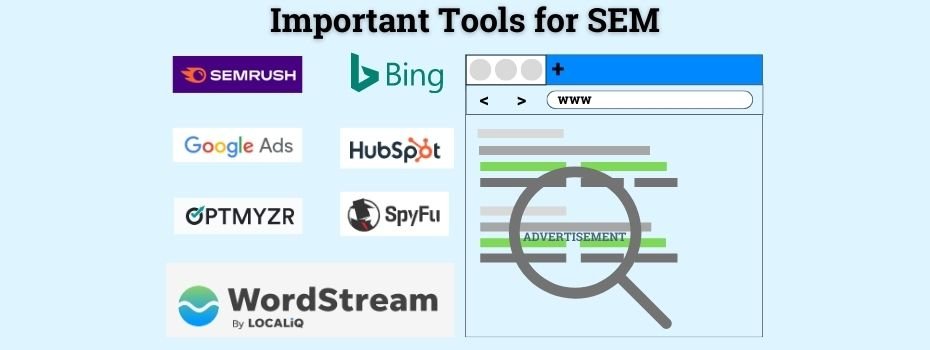
Here are some important tools that you can use for search engine marketing (SEM):
Google Ads
This is a platform that allows businesses to create and run pay-per-click (PPC) ads on Google search engine results pages and other websites.
Bing Ads
This is a platform that allows businesses to create and run PPC ads on Bing search engine results pages and other websites.
Google Analytics
To track the effectiveness of an SEM campaign, marketers can use a web analytics service such as Google Analytics. This popular, free tool provides detailed insights into a website’s traffic and performance, allowing marketers to see how their SEM efforts are paying off. By using a web analytics service, marketers can make data-driven decisions about their SEM strategy and optimize their campaigns for the best possible results.
Keyword research tools
To help target the right keywords in their SEM campaigns, marketers can use keyword research tools such as Google’s Keyword Planner and SEMrush. These popular tools allow marketers to identify relevant keywords that users search and can help guide the direction of their SEM campaigns. By using keyword research tools, marketers can optimize their campaigns for the most relevant and effective keywords, increasing the chances of success.
Ad copywriting tools
These tools help marketers create compelling ad copy that they can use for conversion. Some popular ad copywriting tools include CoSchedule’s Headline Analyzer and Portent’s Title Maker.
Landing page builder tools
To create landing pages that convert visitors into customers, marketers can use tools such as Unbounce and Leadpages. These popular landing page builder tools offer a range of features and customization options to help marketers create professional, effective landing pages. By using these tools, marketers can increase the chances of converting visitors into customers and achieving their business goals.
Conclusion
To achieve these goals, any writer or business owner should consider using search engine marketing (SEM). SEM is a digital marketing strategy that combines search engine optimization (SEO) and pay-per-click (PPC) advertising to improve the online visibility and ranking of a website or online content.
By optimizing their website or content and advertising it online, writers and business owners can quickly increase traffic, leads, conversions, and sales. In short, SEM is an effective way to boost your online presence and achieve your business objectives.
If you’re looking to optimize your website for Search Engines, apply an effective search marketing strategy (SEM), or just market your website on Google Adwords. Contact us Now! We would love to help you grow your business.
[article_faq]

